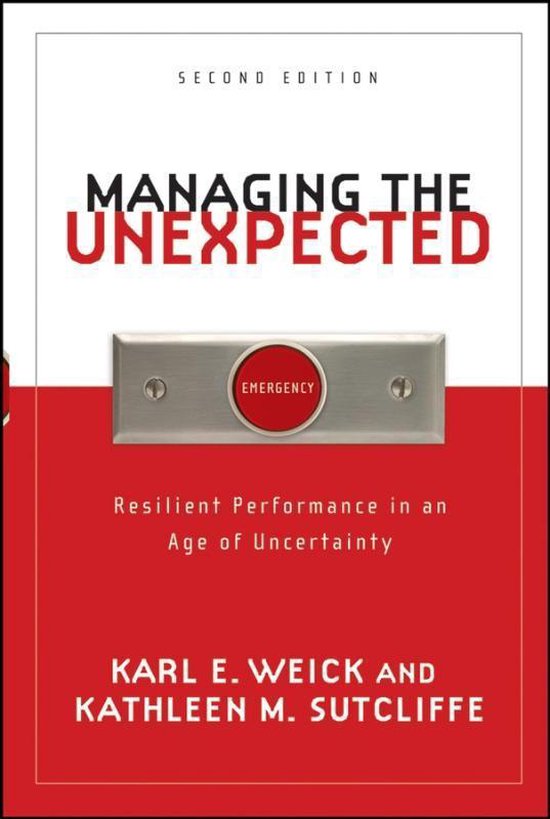
Managing the Unexpected
Since the first edition of Managing the Unexpected was published in 2001, the unexpected has become a growing part of our everyday lives. The unexpected is often dramatic, as with hurricanes or terrorist attacks. But the unexpected can also come in more subtle forms, such as a small organizational lapse that leads to a major blunder, or an unexamined assumption that costs lives in a crisis. Why are some organizations better able than others to maintain function and structure in the face of unanticipated change?
Authors Karl E. Weick and Kathleen M. Sutcliffe answer this question by pointing to high reliability organizations (HROs), such as emergency rooms in hospitals, flight operations of aircraft carriers, and firefighting units, as models to follow. These organizations have developed ways of acting and styles of learning that enable them to manage the unexpected better than other organizations. Thoroughly revised and updated, the second edition of the groundbreaking book Managing the Unexpected uses HROs as a template for any institution that wants to better organize for high reliability.
The authors reveal how HROs create a collective state of mindfulness that produces an enhanced ability to discover and correct errors before they escalate into a crisis. A mindful infrastructure continually
Through a discussion of the principle of mindfulness and the practices that can be used to apply it, the authors show how to anticipate and respond to threats with flexibility rather than rigidity. Their practical, solutions oriented approach includes numerous case studies demonstrating mindful practices and enables readers to assess and implement mindfulness in their own organizations.
Managing the Unexpected is a guide for learning the hard won lessons of high reliability organizations that are able to manage unexpected threats and bounce back in a stronger position to tackle future challenges.
Authors Karl E. Weick and Kathleen M. Sutcliffe answer this question by pointing to high reliability organizations (HROs), such as emergency rooms in hospitals, flight operations of aircraft carriers, and firefighting units, as models to follow. These organizations have developed ways of acting and styles of learning that enable them to manage the unexpected better than other organizations. Thoroughly revised and updated, the second edition of the groundbreaking book Managing the Unexpected uses HROs as a template for any institution that wants to better organize for high reliability.
The authors reveal how HROs create a collective state of mindfulness that produces an enhanced ability to discover and correct errors before they escalate into a crisis. A mindful infrastructure continually
- Tracks small failures
Resists oversimplification
Is sensitive to operations
Maintains capabilities for resilience
Takes advantage of shifting locations of expertise
Through a discussion of the principle of mindfulness and the practices that can be used to apply it, the authors show how to anticipate and respond to threats with flexibility rather than rigidity. Their practical, solutions oriented approach includes numerous case studies demonstrating mindful practices and enables readers to assess and implement mindfulness in their own organizations.
Managing the Unexpected is a guide for learning the hard won lessons of high reliability organizations that are able to manage unexpected threats and bounce back in a stronger position to tackle future challenges.
| Auteur | | Kathleen M. Sutcliffe |
| Taal | | Engels |
| Type | | Hardcover |
| Categorie | | Managementboeken |





